Philips Sonicare Easy Clean Rechargeable Sonic Toothbruch Hx6581 Can You Buy a New Battery for
This guide will take you step by step through how to dismantle the Philips Sonicare EasyClean HX6530 electric toothbrush and replace the internal rechargeable battery. The tutorial is based on the HX6530 model but may be applicable to other HX6500 series models and similar, such as the EasyClean HX6510, HX6511, HX6530, HX6581 and HX6582. The Sonicare FlexCare and HealthyWhite models are also substantially similar. The model number of your toothbrush is marked on the bottom of the handle.
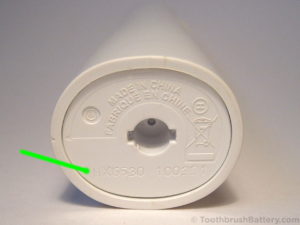
For other toothbrush models the battery replacement procedure is slightly different so please see our other guides to toothbrush battery replacement instead.
The basic method is:
- Open and dismantle handle
- De-solder old battery
- Replace battery
- Solder in new battery
- Reassemble handle
This is documented in detail below along with lots of pictures. Click on any picture to enlarge it.
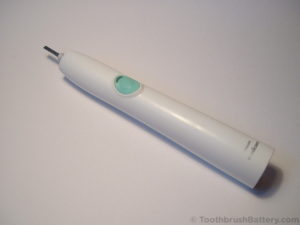
Disclaimer
Any damage to yourself, your toothbrush or anything else is entirely your responsibility. This guide is for professional, educational purposes only and is offered without guarantee or liability. Warning: Lithium-ion batteries are volatile and if overheated they will ignite due to thermal runaway creating a severe burn hazard. Do not short-circuit, disassemble, crush or expose contents to water. Lithium reacts in water like Sodium and Potassium did in those science experiments at school!
Video
We have also created a short video on our YouTube channel from this guide to Philips Sonicare EasyClean battery replacement here, which you can also watch below.
Tools / Parts / Equipment
- Philips Sonicare HX6530 Electric Toothbrush
- Original recharging base
- Soldering iron: Electronics grade (about 18-25 watt) with chisel tip
- Solder: Lead-free silver solder is great for this
- Solder sucker (also known as a desoldering pump) and/or desoldering braid
- Adjustable grips
- Small flat-bladed screwdriver: 2 to 4mm wide
- Miniature side-cutters
- Duct tape
- Corrugated cardboard
- Replacement battery: 49mm by 14mm 3.7V Lithium-ion (Li-ion) with wire pins. Support us by buying from us at ToothbrushBattery.com
How-To
To start with, remove any brush heads from the top of the handle. To soften up the plastic of the handle you can stand the toothbrush in a cup of hot tap water (about 60 degrees C or 140 degrees F) for 5 minutes before starting. This should make opening it up easier as the internal clips should flex more easily.
Tear off a strip of duct tape about 15cm (6 inches) long and stick it around the circumference of the handle right at the bottom, up to the edge.
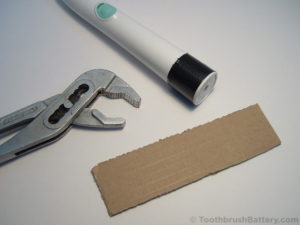
Cut a piece of cardboard the same length and width as the duct tape and wrap over the top of the duct tape. Fix it in place with another piece of tape. Together the cardboard and tape will protect the toothbrush from damage by the grips.
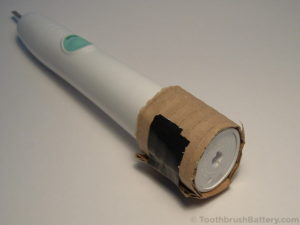
Place the grips right up to the bottom edge of the handle and squeeze the handle firmly across the widest part of the oval base.
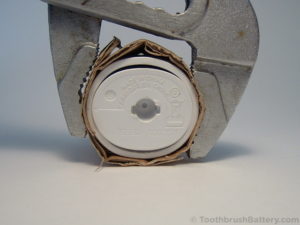
As long as the grips are right up to the bottom edge of the handle the base cap should pop out slightly on both sides. If it only pops out on one side then release the grips, rotate the brush half a turn and give it another squeeze. You should now be able to start gently pushing the inner workings of the toothbrush out from the shaft end.
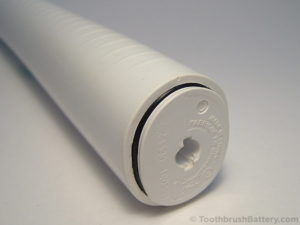
Slide the inner workings of the toothbrush out.
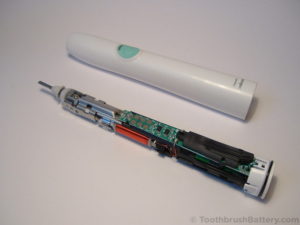
Remove the protective black rubber spacers from both sides. First the circuit board side:
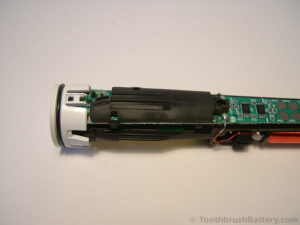
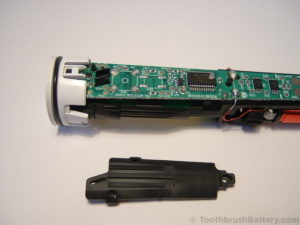
Then the battery side. You can see the original battery in-situ.
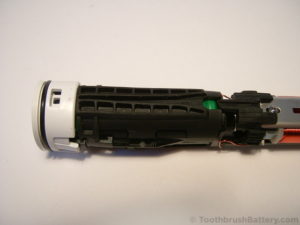
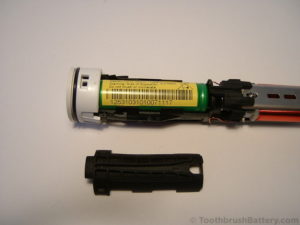
Unclip the end cap by carefully lifting the white plastic clip (arrowed below) and remove the cap.
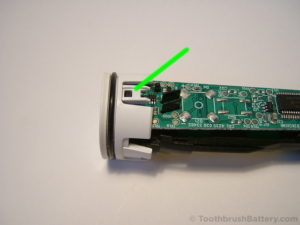
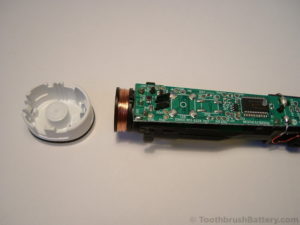
There are three solder points that we're interested in. The positive battery terminal, (arrowed below)
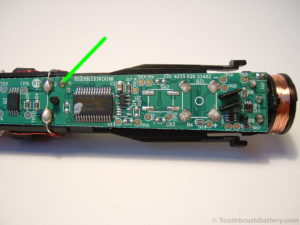
The negative battery terminal, (arrowed below)
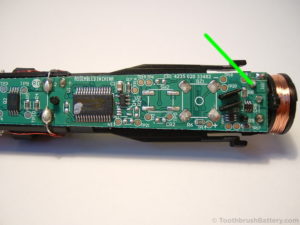
And JP1 which disconnects the battery (arrowed below.) This is very important due to the volatile nature of Lithium-Ion batteries. It also takes away some risk of shorting out the battery when we remove it.
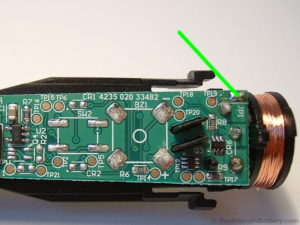
Warm up your soldering iron and using a solder sucker, braid or just by carefully moving the solder blob break the join between the two pads of JP1.
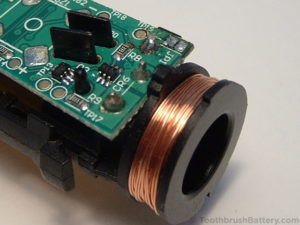
Using the solder sucker or braid, de-solder the positive battery terminal so that the metal pin can be moved inside its hole. You might find that you need to simultaneously pry the battery out slightly at that end while the solder is molten to make sure the solder doesn't solidify back onto the solder tag.
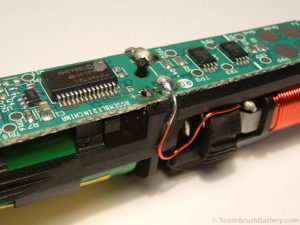
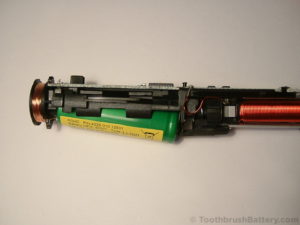
In the same way, using the solder sucker or braid, de-solder the negative battery terminal so that the metal pin can be moved inside its hole. Again, you might find that you need to simultaneously pry the battery out slightly at that end while the solder is molten.
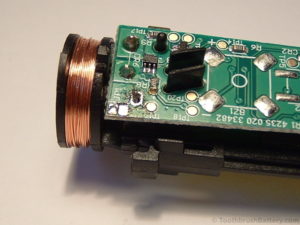
Remove the old battery from its holder.
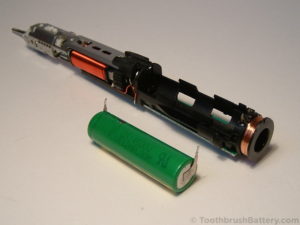
The label on this original battery shows part number POHC P/N 4235 010 12531, Battery Mfg Sony and Type Li-Ion on it. Yours might have a different part number such as POHC P/N 4235 010 15362 and Battery Mfg Sanyo but it should still be a Li-Ion type (Lithium-Ion.)
Compare the original battery to its replacement as shown at the top of the photo below. This is a 49mm long by 14mm diameter 3.7V Lithium-Ion battery. Also available in green! Please support us with writing these repair guides by buying your replacement battery through our secure online shop here at ToothbrushBattery.com. Note the groove around the circumference of each battery. This is at the positive end of the battery.
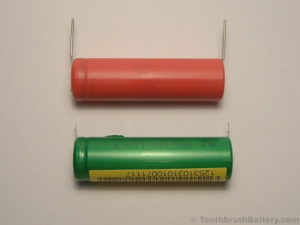
Positive terminals:
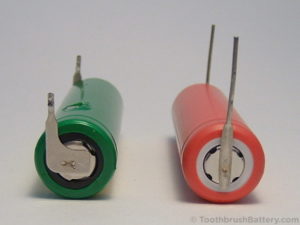
Negative terminals:
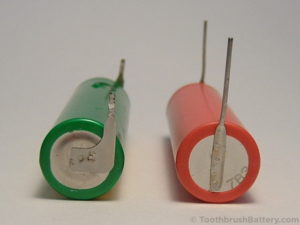
Insert the new battery into its holder with the pins at an angle so they line up with the holes in the circuit board. Make sure you get the polarity (+/-) correct!
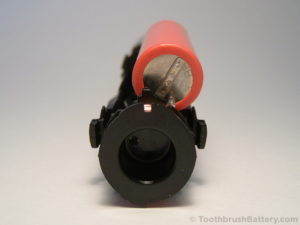
Push the battery right into its holder so the pins go through the circuit board.
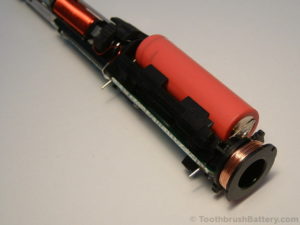
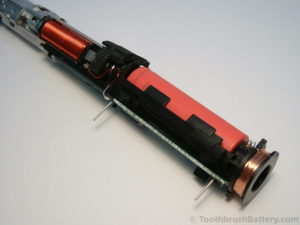
Turn the brush over so you can see the circuit board.
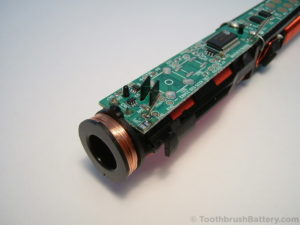
Making sure that the battery is still firmly in its holder, solder both battery pins in place.
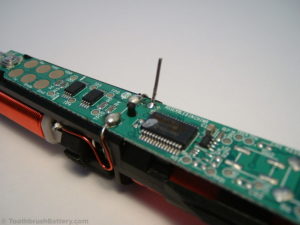
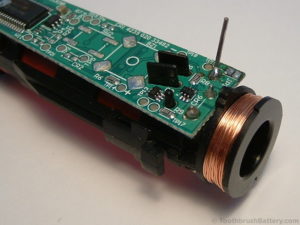
Using miniature side-cutters cut the pins off just above the solder joint.
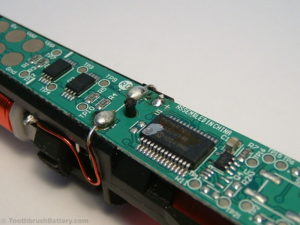
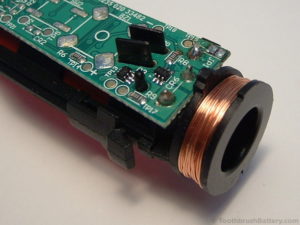
Re-join the two solder pads of JP1.
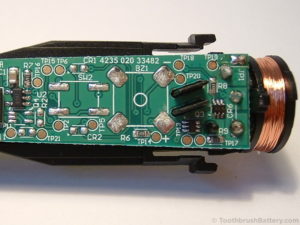
Once the solder has cooled re-fit the protective rubber spacer over the circuit board, ensuring the moulded clips at the sides go over the circuit board.
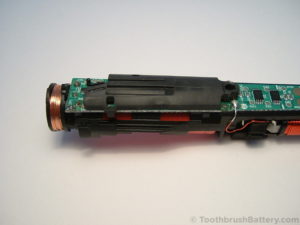
Re-fit the protective rubber spacer over the battery, ensuring the moulded clips interlock with the plastic frame.
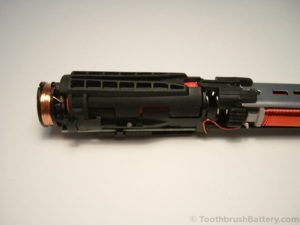
Carefully but tightly hold the toothbrush around the rubber spacers. You can now try switching on the toothbrush to test it by pressing the power switch arrowed below. Be aware that it will vibrate strongly! Switch it off again after a second or two. The light might stay lit for a while after testing.
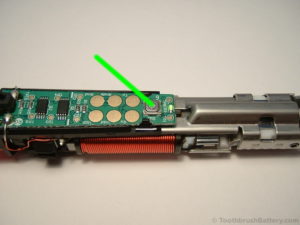
If the brush will not switch on go back and check your soldering of the battery connections, the soldering of JP1 and that the battery was fitted the correct way around.
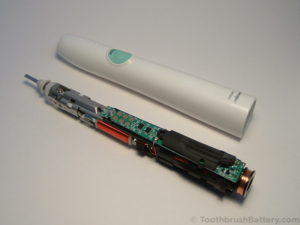
Slide the inner workings back into the handle casing. Make sure the innards are the right way up and that they slide in easily along the alignment splines moulded inside the casing. The inner workings should slide all the way in.
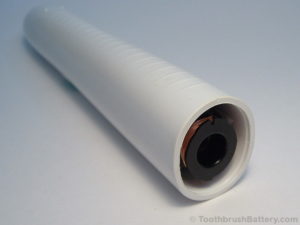
Line up the tiny arrow on the casing with the arrow on the base cap (see below) and push the cap in. It should click into place.
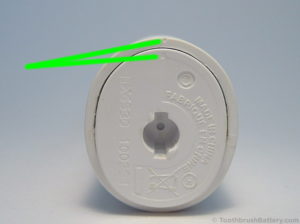
The cap will not clip into place if it is still attached to the innards of the handle. The inner workings have to be installed first, then the cap separately, due to their interlocking clips.
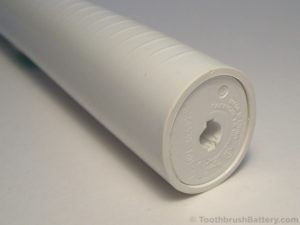
You should now have a fully reassembled Sonicare EasyClean toothbrush! Put the brush on to charge for a full 24 hours and check that the charging light starts to flash. Please recycle your old battery at either your local civic amenity or a supermarket collection point.
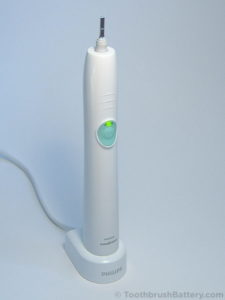
Please leave any questions, tips or comments about repairing your Sonicare EasyClean toothbrush below.
Source: https://toothbrushbattery.com/guides/philips-sonicare-easyclean-hx6530-battery-replacement/
0 Response to "Philips Sonicare Easy Clean Rechargeable Sonic Toothbruch Hx6581 Can You Buy a New Battery for"
Post a Comment